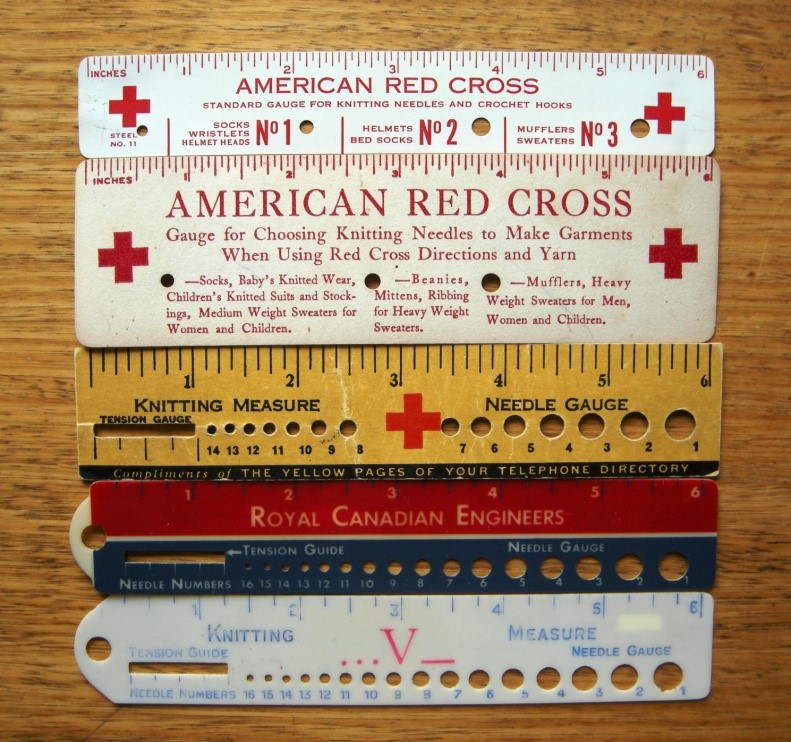WORLD WAR II GAUGES
The World War II gauges are firmly dated, of course, and were produced in both Canada and the United States, as well as other countries. The Red Cross in both countries played a huge role in organising knitting for the services, and hoped that such aids would guide volunteer knitters to produce standardised items that could be easily distributed to servicemen. (It seems to have been assumed that WACS, WAVES, WASPS, WVS, etc., would knit their own “comforts”, as all the pattern leaflets refer to producing items for men.)
In Canada, some other military-related gauges were produced in addition to the yellow Red Cross gauge shown in the middle of Figure 24. Note also that the Canadian Red Cross was able to sign up the telephone company (then, a government-run instrumentality) as a sponsor and, possibly, distributor for its gauge. The Royal Canadian Engineers also issued needle gauges, possibly just as advertising or give-aways.
The fairly common “…V –” gauge is included here at the bottom of Figure 24. The assumption is that it refers to “V for Victory”, as the Morse code elements for V are dot dot dot dash. “V for Victory” was a campaign run by BBC radio to encourage resistance elements in occupied Western Europe. It is not clear who actually produced this gauge in Canada.
The American Red Cross (ARC) gauges kept it simple: in Figure 24, the cardboard gauge second from the top has no numbering at all – just descriptions of the type of items to be knitted! The celluloid gauge on top has three sizing holes at first glance. The numbering shown on the front does not match the Standard American Wire Gauge. This special Red Cross numbering was actually a carry forward from World War I. And sure enough – there on the far left is a fourth sizing hole labelled “Steel No. 11” – shades of those early American days when steel double points had to be measured separately from needles made of organics or synthetics.
On the back, this celluloid gauge equated the ARC numbering to other sizing systems – see Figure 24b for the back of the gauge and one of the Red Cross’s 1943 knitting pamphlets referring to the gauge. In letters so tiny I had to replace my magnifying glass with a loupe, the maker of the gauge is given, The American Art Works Inc of Coshocton, Ohio. This company grew from newspaper printeries at the turn of the 20th century, and is still famous as the printers of the tin Coca Cola trays and signs, so collectable today. They printed mainly advertising on many other materials including burlap, paper, and, here, celluloid.
Figure 24 – World War II gauges, top two from the USA, lower three Canadian.










